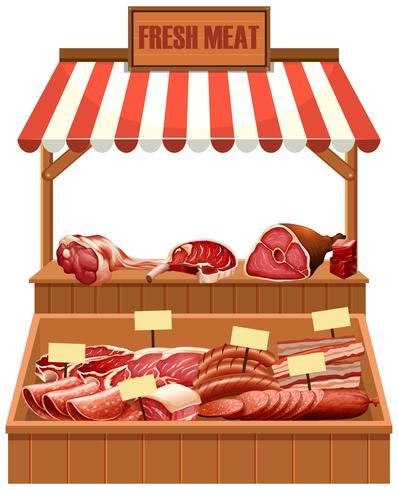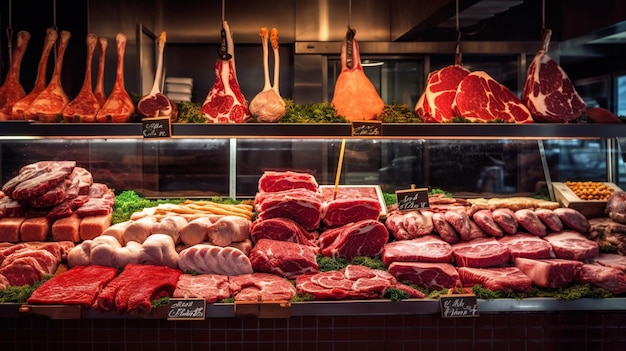From Farm to Table: Embracing the Custom of Meat Markets and Butcheries
In an age controlled by ease and mass production, there exists a silent revolution happening in the culinary world - a return to the origins of food sourcing through the practice of meat markets and butcheries. These establishments, typically ignored in the shadow of grocery stores, are experiencing a rebirth as critical customers look for top quality, traceability, and a link to the origins of their food. What is driving this shift back to the methods of old? The solution depends on the crossway of heritage practices, moral considerations, and a desire for a much more authentic gastronomic experience.
The Renewal of Meat Markets
The resurgence of meat markets throughout different neighborhoods indicates a shift towards a renewed appreciation for in your area sourced, high quality meats. In recent times, customers have actually come to be extra conscious of the beginnings of their food, resulting in an expanding demand for openness and sustainability in the meat market. This pattern has actually led the way for the resurgence of traditional meat markets and butcheries, where customers can straight engage with educated butchers and source their meat from neighboring ranches.
Among the essential driving variables behind this resurgence is the desire for greater quality and fresher items. By purchasing meat from regional markets, consumers can make sure that they are getting fresh cuts that have actually not traveled fars away or been sitting in storage for extensive periods. Furthermore, supporting local meat markets helps strengthen the local economy and promotes area connections.

Workmanship in Butcheries
With the renewal of meat markets highlighting quality and sustainability, the emphasis shifts towards acknowledging the elaborate workmanship showed in modern-day butcheries. Craftsmanship in butcheries exceeds just cutting meat; it personifies a deep-rooted custom of knowledge and accuracy in handling different cuts of meat. Bagley Farms Meat Market. Butchers, typically educated for many years, possess a riches of expertise on the composition of pets, blade abilities, and the art of damaging down carcasses effectively

In modern butcheries, craftsmanship appears in the means butchers very carefully resource their meat, making certain high requirements of high quality and honest practices. They take pride in understanding the provenance of the meat they sell, working very closely with regional farmers and providers to offer customers complete transparency and traceability.
Furthermore, craftsmanship in butcheries encompasses the discussion of meat. Butchers masterfully prepare cuts that not only improve flavor but additionally display the natural beauty of the meat. The art of butchery is a blend of tradition and innovation, where respect for the animal and devotion to the craft cause phenomenal products that absolutely stand apart in today's market.
Locally Sourced Meat Quality

Locally sourced meat supplies various benefits, consisting of fresher products, assistance for regional farmers, and lowered ecological impact due to lowered transportation ranges - Bagley continue reading this Farms Meat Market. By acquiring meat from nearby ranches and butcheries, consumers can have a lot more self-confidence in the high quality and safety and security of the items they are acquiring

Farm-to-Table Purchasing Experience
In the world of locally sourced meat high quality, the farm-to-table shopping experience supplies customers a direct connection to the origins of their food - Bagley Farms Meat Market. This one-of-a-kind buying experience enables customers to map the journey of their meat, from the ranch where the animals were increased to the table where it will be enjoyed. By engaging in farm-to-table shopping, individuals can get a much deeper understanding of the farming methods, animal well-being standards, and sustainability initiatives associated with producing their meat
One of the crucial benefits of the farm-to-table purchasing experience is the transparency it supplies. Customers have the chance to engage with local farmers and butchers, asking inquiries regarding the meat they are acquiring and discovering concerning the details cuts readily available. This straight communication promotes trust between manufacturers and consumers, making sure that people are confident in the quality and beginnings of the meat they are bringing home. The farm-to-table buying experience commonly promotes a feeling of neighborhood, as consumers support local businesses and farming, strengthening the bond in between metropolitan and country locations.
Custom Satisfies Modern Culture
The convergence of typical meat markets and butcheries with modern culture offers an unique possibility for the conservation of artisanal methods in a contemporary context. While contemporary advancements have transformed numerous sectors, the essence of standard meat markets and butcheries continues to be deeply rooted in history and craftsmanship. This mix of tradition and modernity permits the continuation of classic techniques while adapting to the needs and choices of today's customers.
In today's fast-paced world, where ease typically trumps high quality, there is a growing recognition for the heritage and credibility that conventional meat markets and butcheries offer. Consumers are progressively seeking openness in the sourcing and production of their food, leading them back to the tailored service and competence found in these establishments. The emphasis on sustainability and moral techniques straightens with the values supported by numerous typical meat markets and butcheries, promoting a sense of neighborhood and obligation in the direction of the environment.
As society remains to advance, the coalescence of click here to read practice and modernity in meat markets and butcheries not just ensures the preservation of artisanal methods however likewise enhances the culinary landscape with a blend of heritage and development.
Conclusion
To conclude, the tradition of meat markets and butcheries is experiencing a rebirth in contemporary society. These facilities provide locally sourced meat of excellent quality, providing a farm-to-table buying experience for customers. The craftsmanship and expertise found in butcheries add to the credibility and worth of the items used. By welcoming this custom, people are able to link with their food in a meaningful way, connecting the gap between the past and the existing.
In an era dominated by convenience and mass manufacturing, there exists a quiet revolution taking area in the cooking world - a return to the roots of food sourcing with the custom of meat markets and butcheries.The renewal of meat markets across numerous areas suggests a change in the direction of a restored appreciation for locally sourced, high quality meats.With the resurgence of meat markets highlighting high quality and sustainability, the focus shifts towards recognizing the intricate craftsmanship displayed in modern butcheries. Craftsmanship in butcheries goes beyond simply reducing meat; it personifies an ingrained custom of competence and accuracy in managing various cuts of meat.In today's hectic world, where convenience often surpasses quality, there is a growing appreciation for the heritage and credibility that typical meat markets and butcheries use.